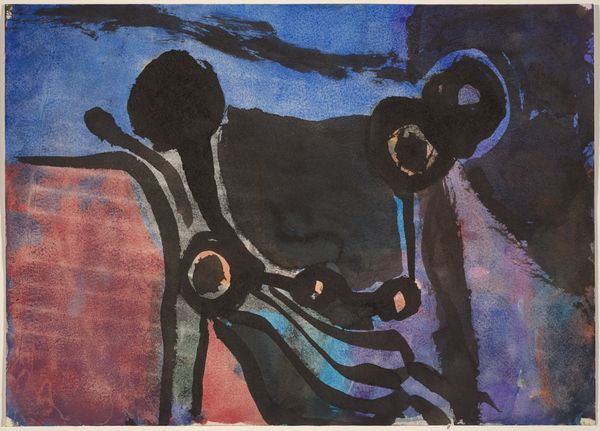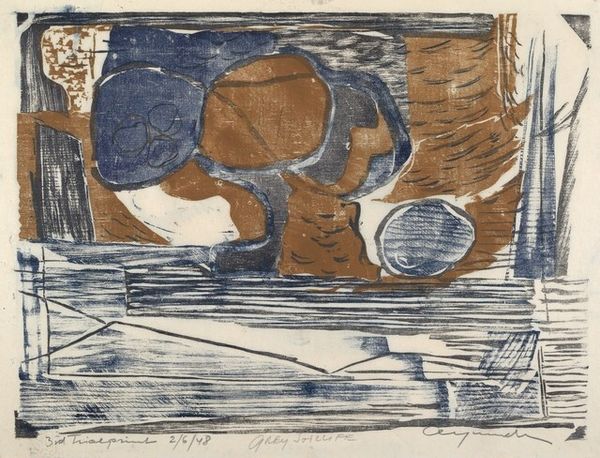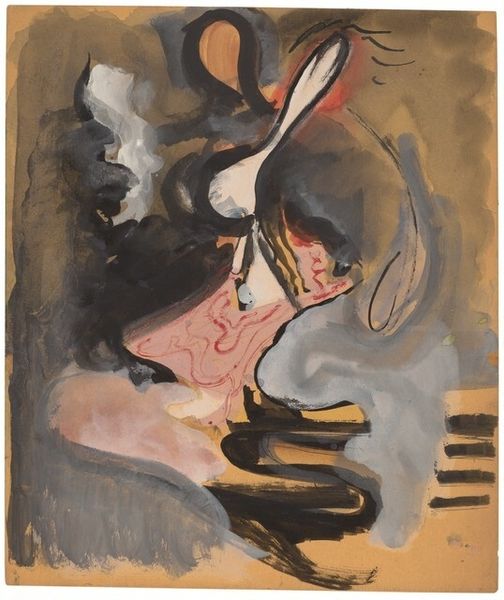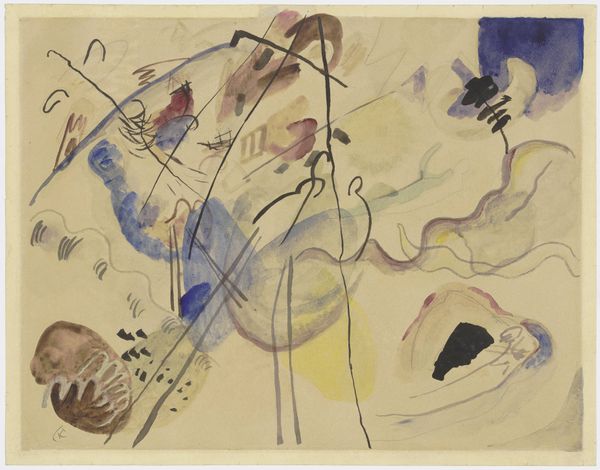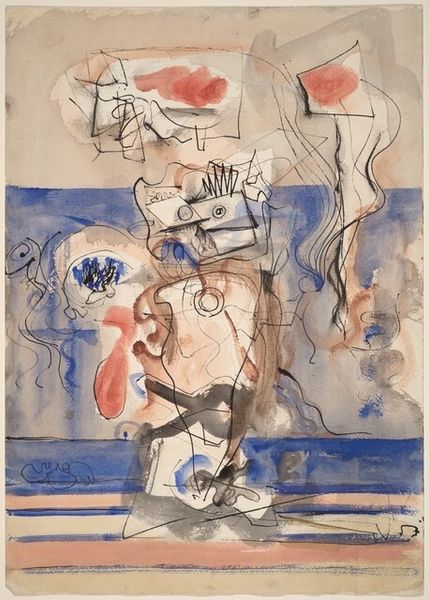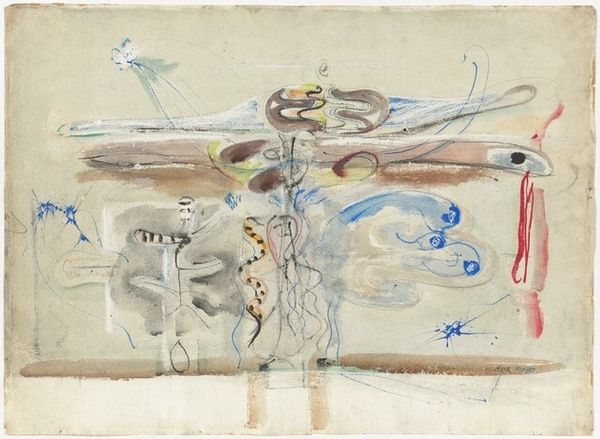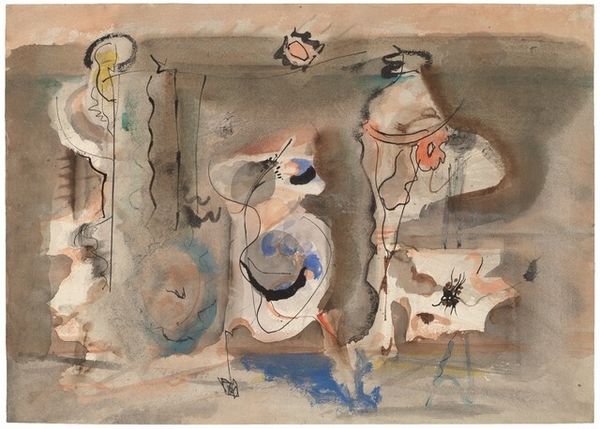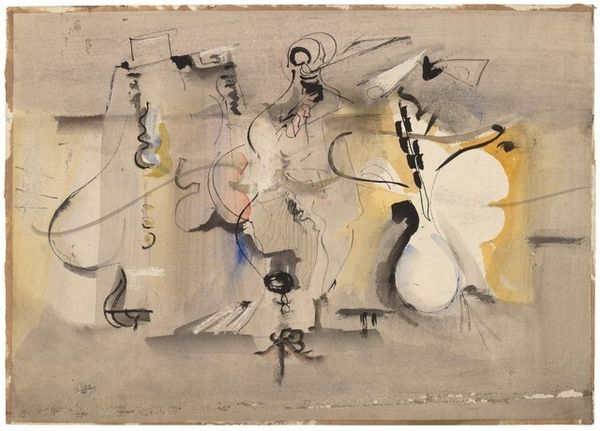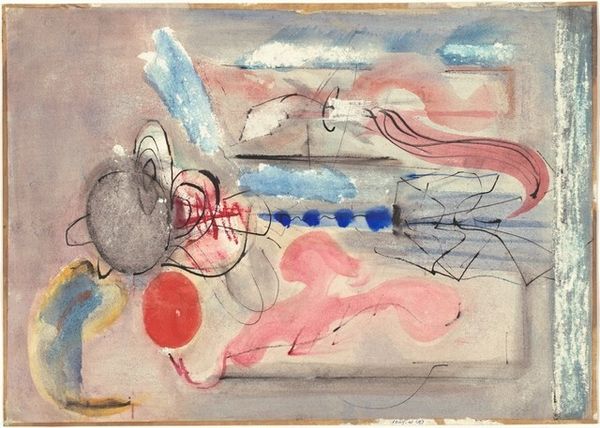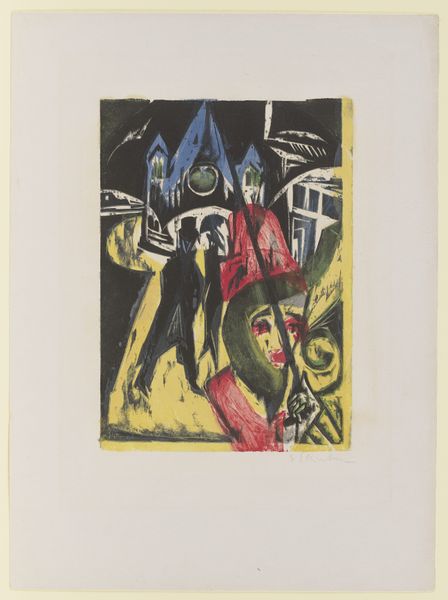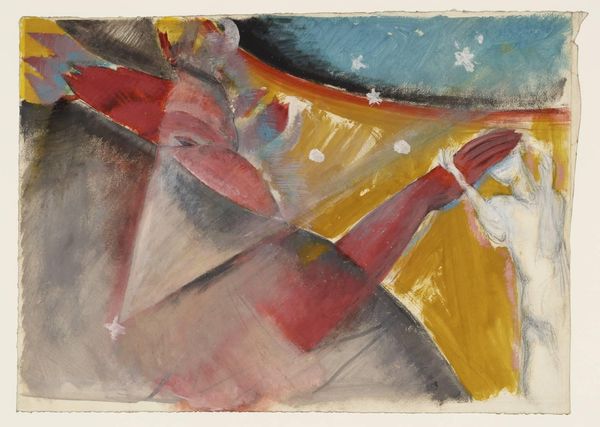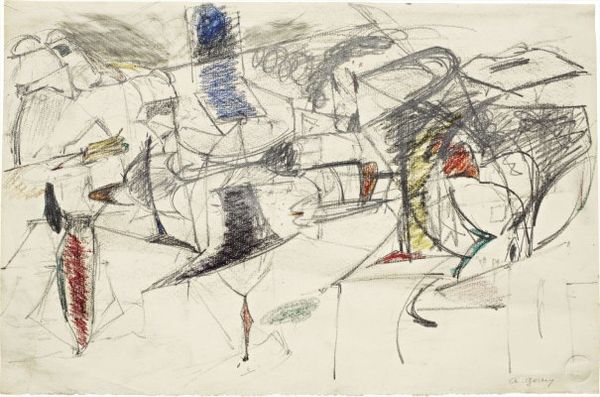
Abstract Composition in Blue, Black, Gray, and Tan c. 1944 - 1946
0:00
0:00
drawing, watercolor
#
abstract-expressionism
#
drawing
#
abstract painting
#
form
#
watercolor
#
geometric
#
abstraction
#
line
#
modernism
#
watercolor
Dimensions: overall: 38 x 53.4 cm (14 15/16 x 21 in.)
Copyright: National Gallery of Art: CC0 1.0
Curator: What immediately strikes me about this piece is its almost hesitant quality. There's a vulnerability in the loose lines and muted palette, a stark contrast to Rothko's later, more assertive canvases. Editor: Indeed. This watercolor and ink drawing, "Abstract Composition in Blue, Black, Gray, and Tan," thought to be created between 1944 and 1946, showcases Rothko’s journey towards the signature style he’s so known for. You see echoes of surrealism and a grappling with form. How do you interpret the interplay between the defined and the amorphous here? Curator: For me, the geometric shapes against the wash of color speaks to the push and pull of order versus chaos, of knowing and not-knowing. Considering the time frame, the war's profound impact must be considered – that existential questioning of the world's construct. There’s something quietly defiant here, in his insistence on the abstract in the face of such stark realities. Editor: Absolutely. The mid-1940s was a period of intense socio-political upheaval. The art world too was reacting against traditional structures, looking for new means of expression. Do you find that this work participates in a certain type of dismantling of old institutions? The style, in that sense, is its own message? Curator: I see it more as a deconstruction of the self. Look how the composition denies the eye any real resting place. Instead, we’re invited to linger in a space of uncertainty. Is it landscape, architecture, or some fragmented interior state? Perhaps he reflects an era of questioning imposed categories as a foundation for reconstructing identity through color and abstraction. Editor: Precisely. Rothko went on to become one of the central figures in Abstract Expressionism. Pieces like this show his origins, demonstrating how the abstract provides liberation from pre-defined concepts of identity while encouraging new narratives of society. Curator: It makes you consider the socio-cultural impetus of artists. What must that artistic process have felt like in those times, caught between external turmoil and the stirrings of a completely novel mode of expression? Editor: A crucial work. Hopefully it prompts some reflection for listeners today. Curator: Indeed. An artistic revolution of its own.
Comments
No comments
Be the first to comment and join the conversation on the ultimate creative platform.
